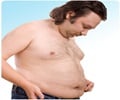Physical activity levels often start declining at seven years of age. Therefore, it is necessary to take extra effort to improve your exercise performance to live a healthy life.

‘Decline in physical activity often begins as early as age 7. Therefore, it is necessary to take extra effort to increase your exercise performance to live a healthy life.’
Read More..




While the level of physical activity varies between individuals, it can also vary within individuals during the life course. A recent study, carried out in collaboration between the University of Jyväskylä and LIKES Research Centre for Physical Activity and Health, systematically reviewed scientific articles identifying distinct subgroups of physical activity and the factors related to these subgroups in the general population in different countries during different life phases.Read More..
The proportion of decreasingly active individuals was exceptionally high during childhood and adolescence. Drop-out from sport participation was prevalent in adolescence while the overall physical activity started to decline already around the age of school entry among highly, moderately and low active children. The studies using self-reported measures of physical activity reported the decline of physical activity to be initiated around the age of ten while studies using modern, objective measures of physical activity found the corresponding age to be as early as seven years of age.
"However, it seems that the physical activity level of those decreasing their physical activity does not approximate to the level of the inactive ones before reaching mid-age or old age," says Ph.D. student Irinja Lounassalo from the Faculty of Sport and Health Sciences at the University of Jyväskylä. "Thus, despite the common declining tendency of physical activity throughout the life course, being physically active in childhood and adolescence may be of high importance since it can postpone the time of becoming inactive later on."
The results support previous findings of the relatively high proportion of persistently inactive individuals at all ages, with this proportion increasing with age. Interestingly, subgroups of increasingly active participants were observed among adults and older adults.
"In the future, special attention should be paid to these individuals who increase their physical activity, because it is important to understand how potential lifelong inactivity could be turned into activity," Lounassalo suggests.
Advertisement
"Since physical activity behavior stabilizes with age and inactivity is more persistent behavior than activity, interventions should be targeted at children early in life before their habits become stable," emphasizes Lounassalo. "Additionally, supporting schools and sport clubs is crucial for promoting an active lifestyle for all children. Since parents may have an effect on activating their children, parents would need support for finding ways to do that. Building publically available sport facilities and safe bicycling and walkways might help in increasing opportunities for being active regardless of age, nationality, gender or educational level."
Advertisement
"Only in recent years has the number of studies identifying distinct physical activity trajectory classes increased," Lounassalo explains. "In trajectory studies, the target behavior of individuals in the same trajectory class is expected to be similar, while it differs from that of the individuals in the other classes. The studies included in this review most commonly reported three or four physical activity subgroups describing either persistent, increasing or decreasing activity or inactivity."
Source-Eurekalert














